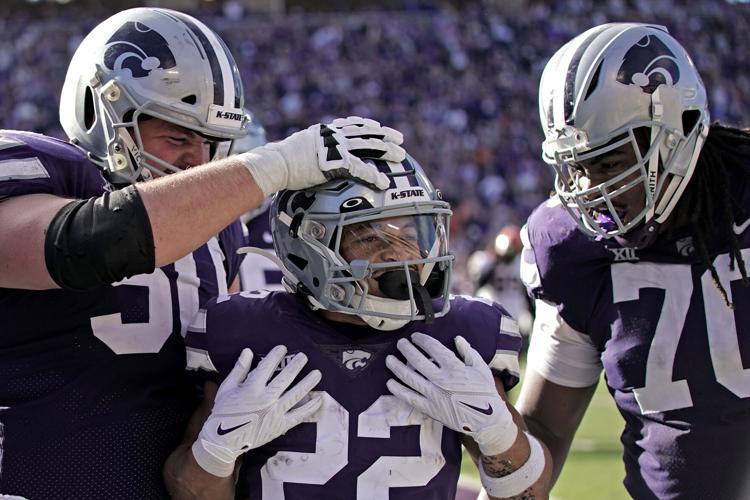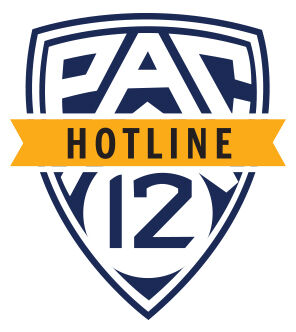The news broke Sunday before dawn on the West Coast, straight from the Southern Plains: Moving swiftly and strategically, the Big 12 locked in a media rights contract with ESPN and Fox reportedly worth $2.3 billion over six years.
Across the Pac-12 footprint, the development generated interest, not alarm as it ventures down a similar but not identical path.
The conference began working toward a new media deal four months ago, after the announced departures of USC and UCLA, and still doesn’t have an agreement.
A deal remains weeks, and perhaps months, away. Yet here comes the Big 12, cutting in line to feed at the media rights revenue trough.
Is Pac-12 commissioner George Kliavkoff, who offered a stunningly optimistic outlook last week, moving too slowly?
Is his confidence misplaced?
Has he been outmaneuvered by Big 12 commissioner Brett Yormark?
It depends where you turn for conjecture.
The Big 12’s deal with ESPN and Fox ensures continued distribution on the two major media players in college sports and averages $31.66 million per school.
It was hailed as a major win for Yormark and rightfully so:
The Big 12 replaced its football behemoths, Texas and Oklahoma, with a slew of mid-level brands (Cincinnati, Houston, UCF and BYU) and managed to secure a 43.9 percent increase in average annual value over the previous deal.
(Given the soaring value of live sports over the past decade, a revenue increase for the Big 12 was never in doubt once the conference secured its existence last fall, but Yormark nonetheless executed effectively.)
The deal also provides a conference rocked by continued instability with a massive injection of security during the most tumultuous era in college sports history.
And crucially, it erases any strategic advantage Kliavkoff held in the negotiating space.
Until now, the Pac-12 was positioned to offer contract terms to its members, and any potential expansion targets, while the Big 12 sat in limbo waiting for its negotiating window to begin in the spring of 2024.
But Yormark’s creative approach provides the Big 12 with a deal in hand — a deal that he can dangle in front of any Pac-12 president unhappy with the contract terms Kliavkoff eventually presents to the group.
His pitch: Come join our league, where you’ll collect $31.66 million per year and need not fret about Oregon or Washington bolting for the Big Ten.
(He can also use the contract to lure schools that might be on the Pac-12’s list, as well, with San Diego State as the biggest beneficiary.)
It seems the leverage has flipped.
But three things can be equally true:
1. ESPN and Fox are the real winners.
The networks would not have agreed to renew the Big 12’s contract if they thought it would be more expensive than waiting until the formal negotiating window in the spring of 2024.
The agreement gives them cost certainty with an important property at a lower price than they would have paid had the Big 12 followed the Pac-12’s approach and taken its media rights to the open market.
2. The Big 12 is a winner.
While the average annual value ($31.66 million) would hardly qualify as transformative revenue for any Pac-12 school that develops a wandering eye, that’s a secondary consideration.
Yormark’s priority was to find the right mix of revenue, exposure and security for his membership, not potential expansion targets.
3. The deal might have no impact whatsoever on the Pac-12’s negotiations and immediate future.
Full clarity should come in the next four-to-six weeks, but we have been struck by a pronounced disparity in outlooks.
Within the Pac-12, there is quiet but unmistakable confidence in Kliavkoff’s ability to deliver a media deal that will beat the Big 12’s valuation and satisfy the full membership.
In fact, the schools are expecting a notably higher valuation figure, according to sources: at least $35 million per campus per year and perhaps something in the $40 million range.
But ask neutral observers, and the outlook isn’t as bright.
“They are overconfident,” said one industry source.
“They have misplayed their hand,” said another.
Why the pessimism?
Three reasons:
While the Big Ten’s massive contract signed over the summer (at least $62.5 million per school) set a new ceiling for media rights valuations in the college sports ecosystem, the Big 12’s deal established a floor. ESPN, Fox and other potential bidders for Pac-12 inventory can use $31.66 million as justification for driving down their offers. After all, the Pac-12 has more in common with the Big 12 than the Big Ten in its post-Los Angeles existence.
Oregon and Washington give the Pac-12 two football brands the Big 12 cannot match, but the Big 12 owns a deeper well of quality programs. In the TV selection process, where networks are paying not only for the best matchup of the week but also for the third- and fourth-best games, depth is critical. In this regard, the Big 12 benefitted from timing: Losing Texas and Oklahoma first allowed the league to scoop up the best Group of Five options.
Streaming giants Amazon and Apple likely have significant interest in partnering with the Pac-12, but they won’t spend more just because they have more.
That said, only Kliavkoff and an extraordinarily small circle of advisors know the true state of the negotiations. The Pac-12 very well could have offers in hand, or narrow valuation ranges, that support the internal confidence.
Perhaps Amazon or Apple view the Pac-12 Networks’ production capabilities as immensely important to their plans for streaming live sports and are willing to pay handsomely for access.
Maybe there are two deals on the table — one with UCLA included, in case the Bruins are forced to stay by the University of California Board of Regents, and one without — and even the lower number beats the Big 12.
On those fronts, the Hotline, like the skeptics, can only speculate.
But clearly, the Big 12’s move adds an element of uncertainty to a fragile situation for a conference caught off once already this year.
We see two outcomes:
Either the Pac-12 closes the media rights deal that Kliavkoff expects and secures not only a lucrative future but the last laugh, or its expectations prove deeply misguided and a grim reality awaits.
Our lean is to the former, as it has been throughout this process. But until the deal is signed and sealed, the latter outcome cannot be ignored.





